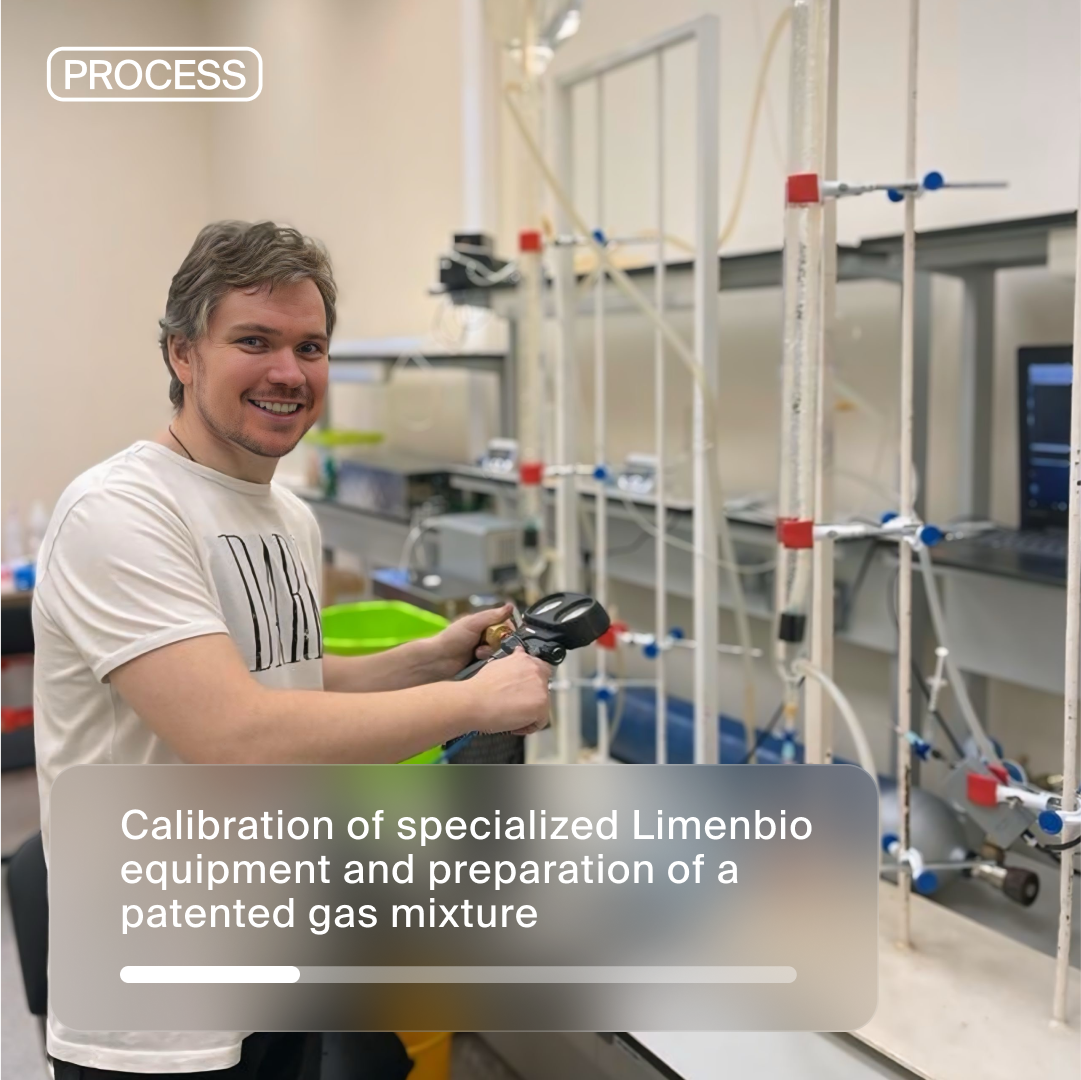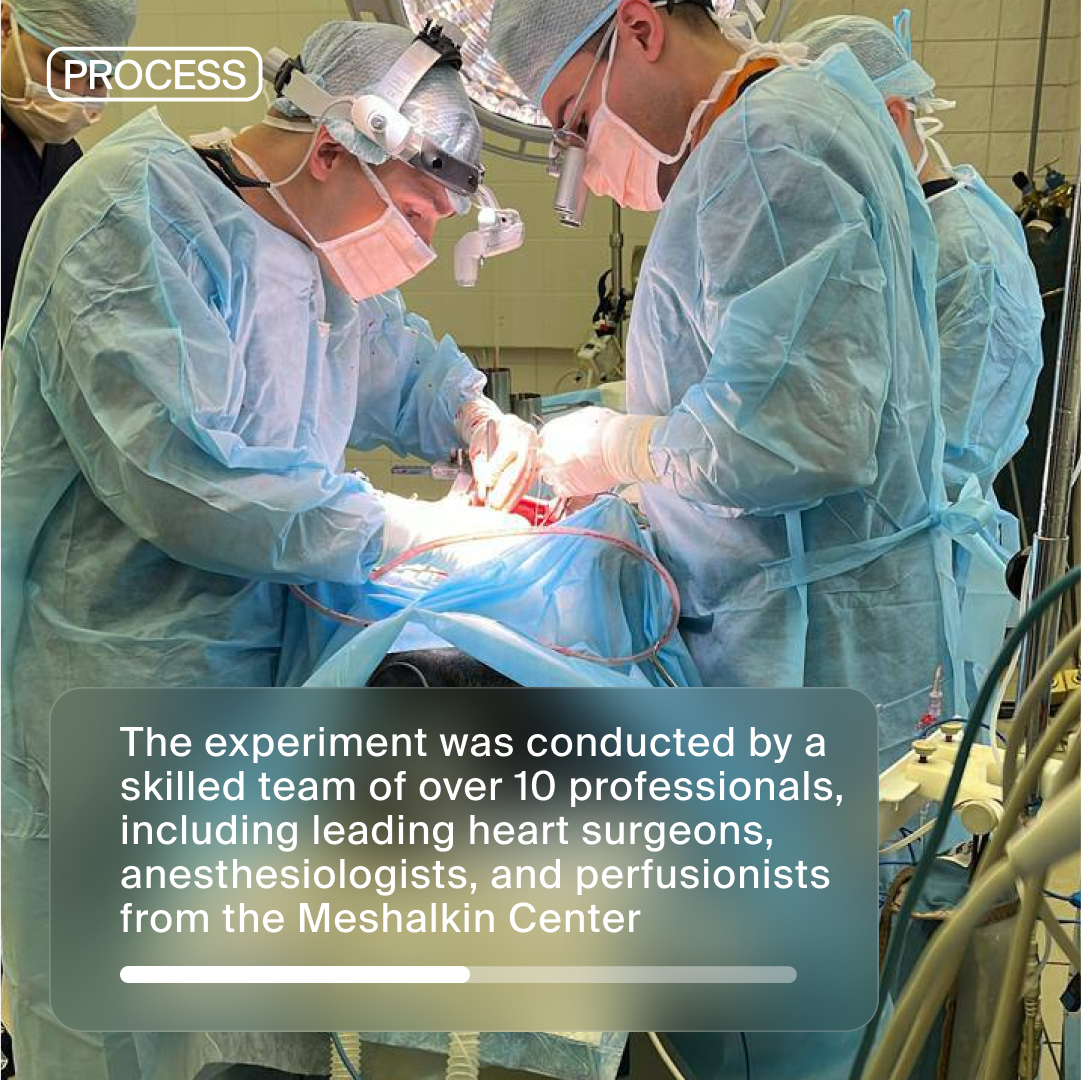September 10, 2024 – Limenbio is proud to announce the successful completion of a landmark series of experiments conducted at the prestigious E.N. Meshalkin National Medical Research Center. The studies successfully demonstrated the prolonged preservation of a porcine heart for 12 hours using our proprietary multi-parametric technology. This duration is three times longer than the current clinical gold standard, marking a critical step toward solving the severe shortage of viable donor organs for transplantation.
This successful experiment validates the scaling of Limenbio's technology from small animal models to large, human-sized organs. This achievement overcomes a significant biophysical hurdle and substantially de-risks the technology for clinical application.
The Critical Unmet Need in Transplant Medicine
The current standard for heart preservation, static cold storage in a solution like Custodiol®, is profoundly limiting. Organs must be transplanted within a narrow four-hour window. This severe time constraint leads to complex logistical challenges, high organ discard rates due to progressive ischemia and tissue degradation during transport, and immense emotional trauma for patients prepared for surgery only to have it canceled. Limenbio's technology is designed to shatter this barrier, creating a portable "organ in a box" system that extends the viable preservation window, thereby democratizing access to life-saving transplants.
The Scalability Challenge: From Gram to Kilogram
A core challenge in medical technology development is scaling from small animal models to human applications. This is not a linear process but one governed by the square-cube law, a fundamental biophysical principle central to Limenbio's achievement.
- A rat heart weighs approximately 1 gram with a surface area of ~3 cm².
- A human or porcine heart weighs ~250 grams with a surface area of ~20 cm².
While the surface area increases by a factor of ~10, the mass increases by a factor of 250. This disproportionate scaling means that diffusion, heat transfer, and gas perfusion processes that work flawlessly in a 1-gram organ cannot be simply assumed to work in a 250-gram organ. Parameters change non-uniformly, presenting an immense engineering and biological challenge. Limenbio's successful 12-hour preservation of a porcine heart proves that its complex approach effectively overcomes this fundamental biophysical obstacle.
Methodology: Precision Engineering and Surgical Excellence in Action
The experiment’s success hinged on a carefully orchestrated protocol, designed not just to test duration, but to validate the entire complex transition to a large, human-sized heart. This required the seamless integration of Limenbio's proprietary technology with the world-class surgical expertise of the Meshalkin Center team. The process, far from being a simple laboratory procedure, was a high-stakes operation demanding precision at every second.
The procedure was built upon three essential pillars:
- Precision Preparation: All specialized equipment and patented gas mixtures were calibrated and prepared in advance, ensuring every component met exact specifications before the experiment began.
- Seamless Integration: Upon explanation, the heart was immediately transferred to Limenbio's preservation system. The transition was managed by a defined protocol, ensuring the organ was swiftly connected and the preservation environment was activated without delay.
- Automated Preservation & Objective Assessment: The heart was maintained under stable, controlled conditions for the target duration, with all parameters continuously monitored remotely. For assessment, the heart was reanimated on a calibrated rig, where its function was evaluated based on unambiguous, quantitative metrics. The superior performance of the hearts preserved using our technology, compared to the standard method, objectively confirms the protocol's effectiveness and reproducibility.
This streamlined approach demonstrates a reliable, repeatable process that minimizes human factor variability, ensuring consistent and high-quality results.


Results: Superior Performance After 12 Hours
The results were unequivocal. A heart preserved for 12 hours using Limenbio's technology demonstrated superior functional performance compared to a heart preserved for just 4 hours using the standard Custodiol® method.
Key performance parameters assessed included:
- Auto-reanimation (spontaneous restart without pacing)
- Stable sinus rhythm
- Myocardial contractility and ejection force
- Comprehensive pressure monitoring (left/right ventricles, atria, and aortic root)
- Visual assessment
The surgical team, drawing on their extensive database of outcomes from standard preservation methods, confirmed the results were not merely equivalent—they were superior.
The Limenbio Advantage: Integrated Complexity
Limenbio's approach is intentionally complex and multi-component, which is both its core strength and a significant barrier to entry for competitors.
- Beyond a Gas Mix: The technology is not solely defined by a patented gas mixture. It is an integrated system comprising the specific gas blend, a proprietary preservation technology, unique gas management system, preservation chamber design, and a rigorously validated protocol for both conservation and reanimation. The failure of any single component leads to the failure of the entire process.
- The Right Partner is Key: As learned from prior unsuccessful scaling attempts with other teams, surgical expertise is non-negotiable. The partnership with the Meshalkin Center—selected for its world-class experience in large animal experimental surgery—was instrumental. This underscores that success requires both groundbreaking technology and flawless execution by highly skilled partners.
- Robust Technology: The system demonstrated robustness. Despite non-ideal conditions and engineering refinements needed in real-time, the technology performed. This resilience under pressure is a key indicator of future clinical reliability.
Forward Look: Solidifying the Pathway to Clinical Trials
The 12-hour result is a validation, not the limit. The immediate next step is a controlled series of experiments to solidify the 12-hour data point with a larger sample size, directly comparing outcomes against the 4-6 hour standard on a statistically significant scale.
While the ambitious goal of 24-hour preservation remains on the roadmap, the focus is now on methodically de-risking the technology further, ensuring that the 12-hour milestone is repeatable and robust, paving a clear regulatory path towards future clinical trials in humans.
While the ambitious goal of 24-hour preservation remains on the roadmap, the focus is now on methodically de-risking the technology further, ensuring that the 12-hour milestone is repeatable and robust, paving a clear regulatory path towards future clinical trials in humans.
A Message to the Investment Community
Limenbio is not merely a research project; it is a technology company actively de-risking a monumental healthcare problem. The successful scaling to a human-sized organ is a fundamental milestone that significantly reduces technological risk. The company's approach—combining deep scientific expertise with strategic partnerships and a complex, integrated solution—creaes formidable intellectual property and a clear, validated path to market. This achievement demonstrates that Limenbio possesses the team, the technology, and the tactical intelligence to execute its mission: to change the timeline of transplant medicine.
Note: All preclinical studies are designed and conducted in strict accordance with the requirements of the European Convention for the Protection of Animals 2010/63/EU and with the 3R principle (Replacement, Reduction, Refinement). Limenbio is committed to minimizing animal use, exploring alternative methods, and ensuring the highest standards of anesthesia and post-operative care to minimize distress.
